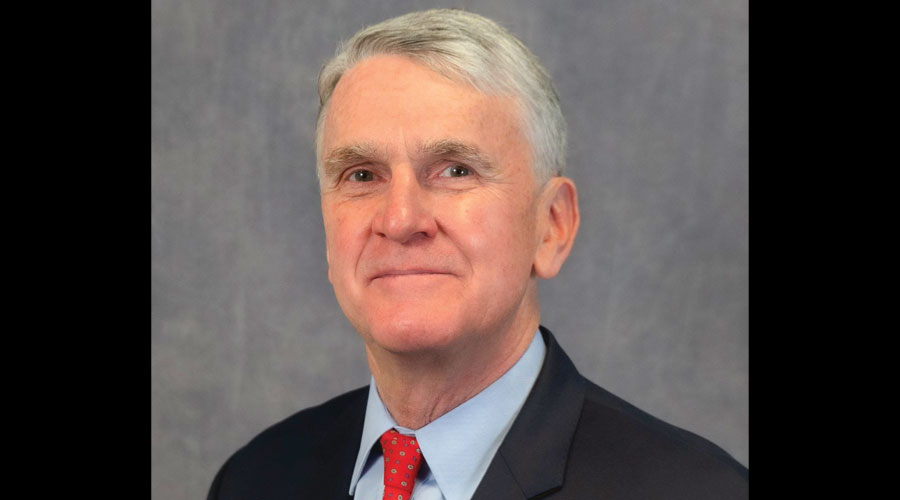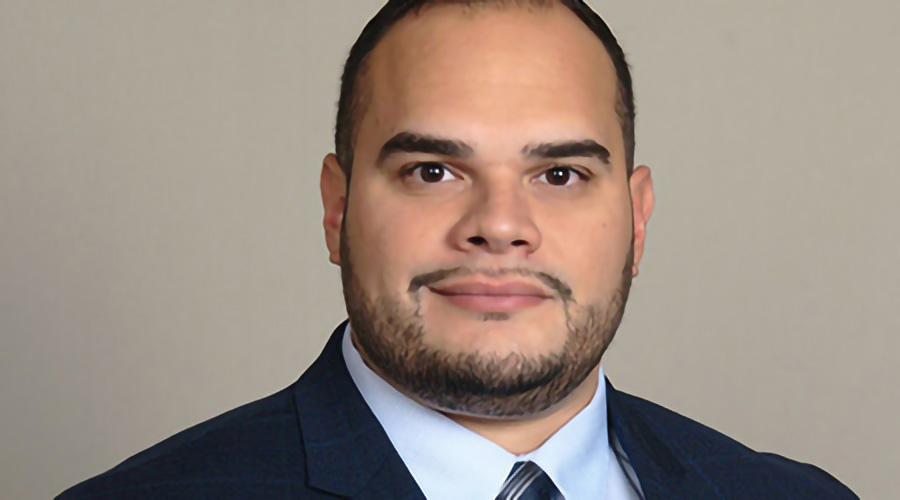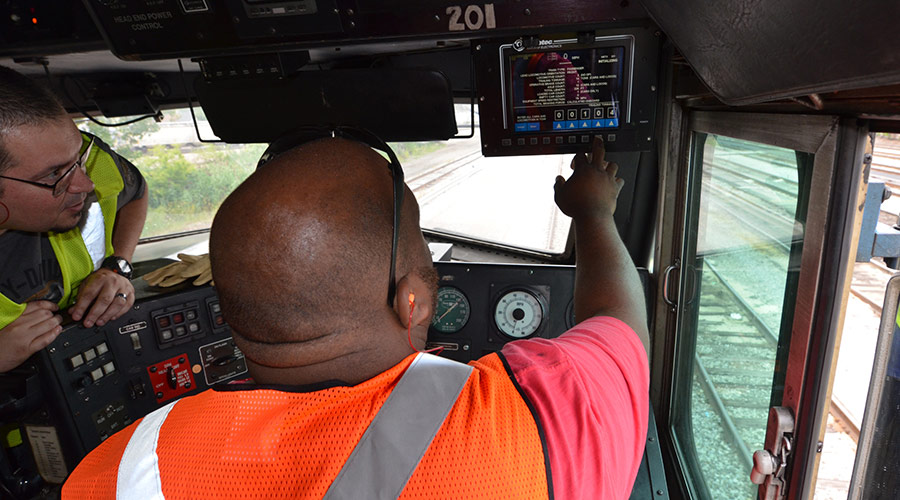Stay updated on news, articles and information for the rail industry
February 2011
Rail News: PTC
Positive train control: Metrolink's PTC implementation push
by Jeff Stagl, Managing Editor
In September 2008, Metrolink drew local and national attention of the most undesirable kind. One of the southern California commuter-rail agency's trains collided head-on with a Union Pacific Railroad train in Chatsworth, Calif., killing 25 people and injuring 135 others.
Caused by the Metrolink engineer — who was text messaging on his cell phone and disobeyed a red signal, according to the National Transportation Safety Board — the collision prompted a federal investigation into Metrolink's safety and operating practices.
In addition, the accident placed more scrutiny on rail safety in Congress, leading to the passage of the Rail Safety Improvement Act of 2008.
The legislation mandates that more than 40 U.S. railroads implement positive train control (PTC) by 2015's end to help ensure an accident like the one that occurred in Chatsworth never happens again. PTC is designed to prevent collisions by stopping a train if an engineer fails to obey a red signal.
The accident also spurred Metrolink senior executives to scrutinize the safety strategy in place at the agency, which is governed by the Southern California Regional Rail Authority (SCRRA). Now, senior execs are in the midst of a more than two-year effort aimed at adopting technology, modernizing rolling stock and changing work practices to make operations safer. The agency's top brass believe the measures are vital because Metrolink operates in the nation's second-largest market and on one of the country's busiest and most complex rail networks, one that's shared by dozens of passenger and freight trains daily.
Their efforts include the installation of inward- and outward-facing cameras and recording systems on dozens of locomotives, and purchase of 137 passenger cars from Hyundai Rotem that feature crash energy management technology. The first batch of cars — which are equipped with retractable couplers and a crumple zone designed to protect riders if an accident occurs — arrived in late 2010.
In addition, SCRRA last year contracted Amtrak to operate all Metrolink trains, as well as provide all its crews, in place of Connex Railroad L.L.C., which along with Metrolink accepted the federal maximum liability of $200 million for the Chatsworth collision. The changeover to Amtrak, which occurred in June 2010, showed a "mutual commitment to provide an exceptional safety environment for passengers, employees and the communities [Metrolink] serves," according to SCRRA officials.
However, a plan to implement PTC by 2012's end, well ahead of the federal deadline, is the agency's most important safety-enhancing effort since late 2008, senior execs say. Metrolink aims to become the first railroad in the nation to adopt the technology by installing PTC on the 216-mile, publicly owned portion of its seven-line network, and a total of about 512 miles of track in conjunction with BNSF Railway Co. and UP.
Although other measures will boost safety — including a certification program under development with the University of Southern California that's designed to train managers on ways to lead a "safe" organization — PTC will help move Metrolink to the next level, says Chief Executive Officer John Fenton.
"Chatsworth showed a need for this technology. PTC is cutting-edge technology," he says. "We want to be the safest commuter agency in the world, and I think we can get there."
'Bringing Science to Safety'
The accelerated PTC deadline was deemed feasible after Metrolink managers discussed what schedule would be necessary and achievable if "we took aggressive action," says Fenton, a former OmniTrax Inc. president and CEO, CN general manager and vice president, and Kansas City Southern VP who assumed the agency's top post in April 2010.
"We're bringing science to safety," he says. "I think we are one year ahead of others in the transit industry. We want to set an example of what implementation should look like."
To do so, Metrolink will need to overcome several obstacles: The agency's PTC system, which will be based on BNSF's and UP's systems because the commuter railroad interfaces with both Class Is, hasn't been fully developed or tested yet; interoperability functions haven't been completely worked out; a spectrum license for necessary radio frequencies hasn't been secured from the Federal Communications Commission (FCC); and a radio system hasn't been engineered.
Despite those hurdles, Fenton believes the agency can meet its accelerated timeline.
"The things we can control, I feel good about," says Fenton. "The things we can't, I want to make sure they are addressed."
All For One, One For All
A few intangibles out of Metrolink's control include BNSF's and UP's efforts to install their PTC systems on lines used by the commuter-rail agency, and Amtrak's plan to equip its locomotives that operate on Metrolink lines with interoperable devices. All three railroads have voluntarily pledged to work with Metrolink on its implementation plan and complete their respective installations by 2012's end, says Fenton.
BNSF is working with all its partner commuter and passenger railroads, including Metrolink, on their PTC efforts, and continues to advance its own implementation plan, said BNSF spokesperson Suann Lundsberg in an e-mail.
UP has committed to installing about 80 wayside devices in the Los Angeles and Santa Barbara subdivisions, and equipping about 45 locomotives that operate in the area with onboard equipment, says Assistant Vice President of Information Technologies Jeff Young.
Although there aren't any concerns about installing all the necessary equipment by 2012's end, "it comes down to how quickly you can train everybody on the system," he says.
In addition, an interoperable radio system that can communicate with any railroad's back office still needs to be developed, says Young, adding that a prototype might be developed by May with production radios available by 2011's end, pending field tests.
Moreover, UP needs to submit its safety plan to the Federal Railroad Administration (FRA) to obtain certification. The Class I might submit the plan in first-quarter 2012, and then the FRA has 90 days to respond.
"So, we're essentially looking at the third quarter of 2012 to get the system certified," says Young.
PTC is complicated and "extremely sophisticated," and implementation shouldn't be rushed, he says.
"If you don't do it right, you might introduce a technology that's less safe," says Young. "And we don't want to negatively impact productivity in the area."
Meanwhile, Amtrak continues to pursue ways to employ interoperable locomotive devices in the L.A. area to comply with Metrolink's needs. After Metrolink finalizes design and implementation, Amtrak will be able to determine the number of locomotives that will require the devices, said Amtrak spokesman Vernae Graham in an e-mail.
"We have been meeting with Metrolink on a regular basis," he said.
In Constant Contact
So have all the railroads affected by Metrolink's PTC plan. A working committee including representatives from Metrolink, Amtrak, BNSF and UP conducts a conference call each month and a face-to-face meeting every three months to ensure PTC work progresses as smoothly as possible, says Metrolink Director of Engineering Darrell Maxey.
Metrolink also maintains an office in Rancho Cucamonga, Calif., where about 60 full-time workers devote their energies to PTC implementation, he says.
The office also houses representatives from SCRRA and Parsons Transportation Group, which in October 2010 obtained a $120 million contract from Metrolink to design, procure, install, test and start up the agency's PTC system. In addition, Parsons will lead development of radio frequency infrastructure, manage development of a network management system and replace a dispatching system.
Metrolink's PTC program calls for installing a back-office system; replacing a computer-aided dispatch (CAD) system; installing onboard computers, display screens, GPS tracking devices and radios on 57 cab cars and 52 locomotives; installing stop enforcement systems at 476 wayside signals; and implementing a six-county specialized communication network to link the wayside signals, trains and centralized dispatch office.
The back office system will serve as a repository for track geometry, wayside signaling configuration and speed restriction databases, as well as a link to other railroads. The onboard systems will include software and hardware designed to provide train operation information — such as current position and brake distance calculations — and enforce restrictions if an engineer fails to respond correctly to commands.
Sourcing and Outsourcing
Metrolink's system also will include a communications network component (CNC) designed to tie together wayside and onboard devices, the back officer server and radio base stations, using both a hard-wired and wireless communication network. In addition, a PTC-compatible wayside signal system will include wayside interface units and necessary hardware/software to interface with the CNC.
A number of subcontractors are working on parts of the PTC project, including Wabtec Corp., which is responsible for onboard equipment, locomotive and cab car modifications, and the back officer server; ARINC Inc., which is replacing the CAD system, upgrading CAD system software and assisting with the back office server; and Tower West Communications Inc., which is erecting antennas and towers, says Maxey.
Other subcontractors include Rail Safety Consulting L.L.C., Mass. Electric Construction Co., Pacific Railway Enterprises Inc., Micom, CalAmp and MeteorComm L.L.C.
As of mid-January, about 40 percent of the 350 wayside interface units needed for the project had been installed, says Maxey.
The agency already has obtained FRA approval for its implementation plan and has secured funding for the $201.6 million public portion of the project, about 80 percent of which will be covered by the state. California will provide $155.1 million in state bond funds, while the FRA will provide $20.6 million in grants and U.S. Department of Transportation will provide $17.8 million in stimulus formula funds. In addition, some local dollars will be allocated for the project.
Tuning In
Before the radio portion of the project can advance, Metrolink managers continue to seek additional bandwidth to enable passenger-rail and PTC communications in the L.A. Basin. The agency plans to purchase radio frequency in the 220 MHz spectrum and obtain FCC waivers for spectrum licensing.
"We have identified the spectrum and a contractor to buy the spectrum, but we're awaiting the FCC license," says Maxey.
Managers also have defined and redefined radio engineering, he says. During frequent meetings with the FRA, the PTC implementation plan tends to get tweaked several times, including portions involving radio engineering, says Maxey.
"It's all about scheduling, and monitoring and adjusting the schedule to make sure everything is getting accomplished," he says. "We're pretty far along, but we still have a long way to go."
Fenton is optimistic that Metrolink will achieve its end-of-2012 goal. The PTC project is a "chance to show the organization can be successful" and that the agency can complete the implementation the "right way," he says.
"We want to instill a culture that's about getting things done," says Fenton.
To do so, he's counting on Metrolink staff and contractor/subcontractor employees to show that the right people are in place — and know what they need to do — to complete the project successfully, he says.
A Metrolink engineer caused the Chatsworth accident that led to the rail safety act and PTC mandate, so come 2013, it'll be up to agency employees to prove to riders, the public and feds that they not only have the technology, but the know-how, to prevent another tragic collision.
"Technology can only take you so far," says Fenton. "It's still all about the people."


 2025 MOW Spending Report: Passenger-rail programs
2025 MOW Spending Report: Passenger-rail programs
 Gardner steps down as Amtrak CEO
Gardner steps down as Amtrak CEO
 Guest comment: Oliver Wyman’s David Hunt
Guest comment: Oliver Wyman’s David Hunt
 Women of Influence in Rail eBook
Women of Influence in Rail eBook
 railPrime
railPrime







